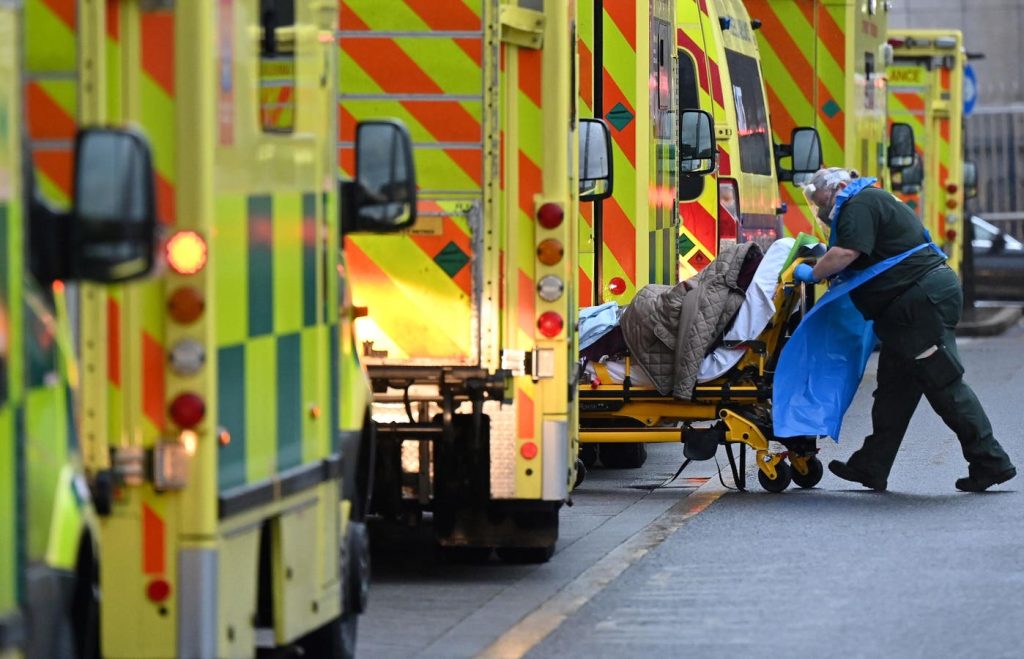An official report has laid bare the emergency care crisis England’s public hospitals have endured for more than a year.
Statistics from the National Audit Office show the demands of an ageing population are outpacing the capacity of a system already struggling to recover from the impact of Covid-19.
Numerous metrics, from emergency room delays to the time it takes for call handlers to answer emergency calls, saw their worst-ever results last winter.
Every second counts
ADVERTISEMENT
In December 2022, for example, 711,881 people — more than ever before waited more than four hours in emergency rooms for admission, transfer or discharge.
That same month, the average response time to an emergency “999” call — the British equivalent of 911 — was 88 seconds. Again, this is this the worst result on record for this metric.
Fortunately, this figure had fallen back down to 17 seconds by March this year. But that’s still 3 seconds longer than the average answer time in March 2018.
Despite a wave of poor results, the report showed the health service actually employed higher numbers of staff than in recent years and performed more activity in many areas.
Demand exceeding capacity
But growing demand for services means the health system is still greatly overstretched.
ADVERTISEMENT
This demand is driven by a number of factors, including the complex health needs of an increasingly older population.
Social care is also outstripping supply, meaning that many patients in need of say, a care home bed or domiciliary support, may have to stay in hospitals until these services become available. If clinicians aren’t sure a patient has a safe place to go, they may keep them in hospital even if they are medically fit to leave.
This can reduce the number of beds available for emergency patients, exacerbating crowding in ERs, long ambulance handovers, and slower ambulance response times as crews and their vehicles are left waiting outside of hospitals.
Deteriorating results
The pandemic, which led to widespread treatment delays as well as direct harm, has made existing problems worse.
ADVERTISEMENT
Public hospitals haven’t met the so-called “four hour standard” — whereby at least 95% of patients are admitted, transferred or discharged from emergency rooms within four hours — since 2015, for example.
Experts say the figures paint a “vivid picture” of a challenges facing this critical public service.
Matthew Taylor, who leads industry body NHS Confederation, said in a statement: “The NAO paints a vivid picture of urgent and emergency care in difficulty, which health leaders will sadly recognise all too well, despite their continuing efforts to improve and their optimism for the future.
“The challenges facing UEC services must be seen in the context of continuing high levels of demand, staffing issues, winter pressures, the aftermath of the pandemic, squeezed budgets, industrial action and a social care sector on its knees.”
ADVERTISEMENT
Miriam Deakin, director of policy and strategy at NHS Providers said that “the growing mismatch between high demand and limited capacity — including beds and staff” was slowing down the speed at which patients could get the care they needed.
This was seen across the health system, from emergency care to mental health and community services.
Praising the efforts of hospital leaders and staff to deliver greater and greater levels of care, she warned: “This problem will continue until longstanding challenges including the need for better national workforce planning and better capital investment are properly resolved.”
Earlier this year, the National Health Service did launch a strategy to help bring down waiting times and recover urgent and emergency care. But experts have suggested it doesn’t go far enough.
Taylor said the service needed “a strategy for national health, which includes social care and takes into account the wider determinants of health,” as well as a long-term workforce plan and more investment in community care.
ADVERTISEMENT
He also asked for “patience and space ,” for the industry leacers who “will deliver on recovery and improvement plans.”
Deakin echoed his calls, saying: “It’s clear [hospital’s] leaders’ efforts need to be bolstered by action on a national level, including with the publication of the government’s long-awaited long-term workforce plan.”
Read the full article here










